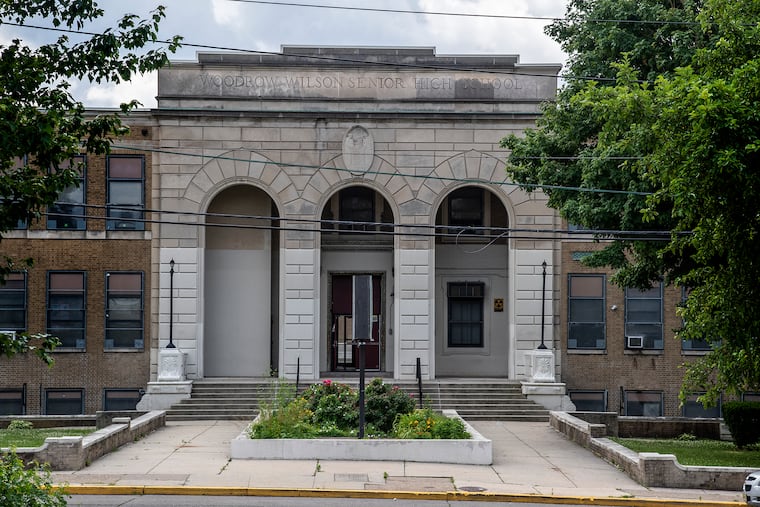Camden high school’s diverse student body deserves a school with a meaningful name | Opinion
Renaming an institution like a school is important, especially when the goal is to elevate the triumphant spirit of alumni and current students over the racist spirit of a man who viewed them

Woodrow Wilson was an unabashed racist and white supremacist.
That’s why, in 2019, I advocated that the Camden City School District change the name of Woodrow Wilson High School. I was pleased when the district, as well as journalists from this newspaper, understood my point of view. As a result, the district elected to change the name of the school.
At a school board meeting last month, school district Superintendent Katrina McCombs announced the new name: Eastside High School.
I was disappointed by this choice and I wasn’t the only one.
Former school board members including Theo Spencer and Jose Delgado lamented the selection, along with many other longtime Camden residents. On Facebook, some people were angry that the proposed name Camden High East sounded too much like the longtime rival Camden High. Others were amused that Eastside is also the name of the Paterson district school in the 1989 film Lean on Me.
» READ MORE: Camden’s Woodrow Wilson High School renamed Eastside High
Part of the reason why people are upset is that they were left out of the renaming process. When the superintendent initially announced plans to rename the school in June 2020, a committee with more than 100 members was involved. That committee listed former President Barack Obama, former U.S. Rep. John Lewis, and former school board member Martha Wilson as potential namesakes. But a few months later, the district halted the renaming process because of the pandemic, and the initial group was replaced with a 10-member committee.
More community members should have been involved in the process to rename the school. If they had been, the school might have been christened with a name that celebrates the history of Black and brown people, which would have been more appropriate than a generic name like Eastside High. Former board member Spencer suggested Arturo Schomburg, the Afro-Puerto Rican scholar of Black history, who would have been a great choice to represent the school’s student body, which is 30% Black and 68% Latino.
In many cultures, naming is connected to memory and resistance. Renaming a treasured community institution like a school is important, especially when the goal is to elevate the triumphant spirit of alumni and current students over the racist spirit of a man who viewed those very people with contempt.
In his book Africanisms in American Culture, historian Joseph Holloway wrote about how names and naming are of great importance in west and central Africa. For enslaved Africans throughout the diaspora, names became a way of maintaining the momentum of memory of their “Africanness” upon arrival to the New World. For example, during the colonial period, African Americans engaged in the practice of naming children after days of the week, months, and seasons to retain African language. The name Cuffee, for example, originated from the Ashanti people and means “born on a Friday.” Among the Gullah specifically, children had two names: a given name in American English and an intimate, familial name of African origin.
The linguist Laura Alvarez López notes that the multiplicity of names and identities observed in Afro-Latin American communities is a remnant of the historical strategies of resistance developed by the enslaved population. For example, in Argentina, many freed Africans adopted the surname de la Patria (of the fatherland) because they wanted to dissociate themselves from the regime that had enslaved them and brought them from Africa to Río de la Plata.
Choosing the name Eastside High School was a safe choice. Future officials won’t have to travel down this road again — renaming a school, named for someone else, due to discovery of that person’s despicable character and/or behavior.
However, considering the African diasporic traditions of naming, which are indigenous to African American and Afro-Latino cultures, the name Eastside High School removes any chance for the community to reclaim the dignity that the name Woodrow Wilson historically denied.
For a city routinely denied its dignity through state takeovers, privatization, and corporate gentrification, choosing a name that the people can take pride in would have been a good way for Camden to rise.
Rann Miller is an educator, freelance writer, and founder of the Urban Education Mixtape, supporting urban educators and parents of students in urban schools. You can follow him on Twitter @UrbanEdDJ and on Instagram @urbanedmixtape.